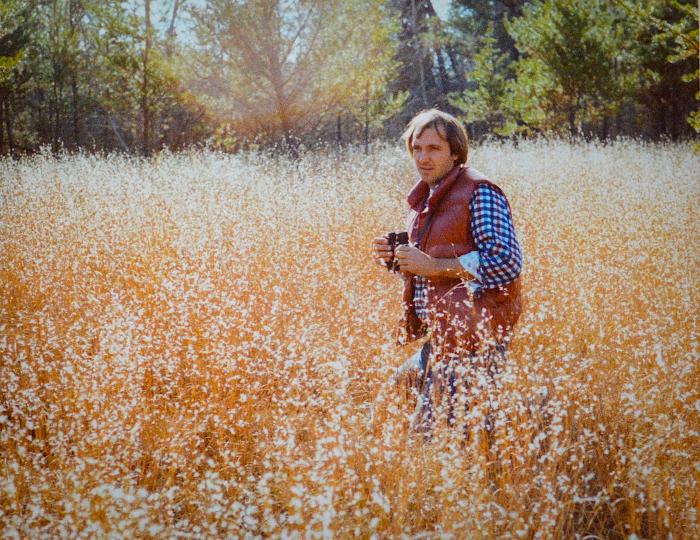Culturally Informed Land Restoration

Inspired by the history of the land he stewards and driven by his desire to connect more deeply with his family’s traditional cultural relationships with the land, Damian Vraniak has worked for the past 30 years to restore the savanna and prairie land once owned by his grandfather.
Background
Starting with the purchase of 40 acres from his grandfather in 1975, resident and steward of the land, Damian Vraniak, has since connected over 225 acres along one mile of shoreline of the Namekagon River near Springbrook, Wisconsin. Inspired by the history of the land he stewards and driven by his desire to connect more deeply with his family’s traditional cultural relationships with the land, Damian has fostered a place of “preservation, restoration, conservation and consecration,” planting tree and shrub species that are of cultural significance to his ancestors and those who have lived on the land before them.

Highlights
One of Damian’s largest projects has been to restore over 100 acres of remnant oak and red pine savannas. In 2020, he was able to remove 48 acres of hazelnut and other brush species with technical and financial assistance from the U.S. Department of Agriculture (USDA) Natural Resources Conservation Service (NRCS) Environmental Quality Incentives Program (EQIP), dramatically reducing fuel loads prior to utilizing prescribed burning as a management tool in the restoration process. Not only did this help keep overall fire intensity down to prevent excessive damage to the overstory trees and native forbs, but it set the stage for successful maintenance in the future.
Amongst the savannas, Damian has been working to restore the upland and lowland prairies for over 30 years in partnership with NRCS and several other conservation stakeholders including the U.S. Fish and Wildlife Service, Wisconsin Department of Natural Resources and the National Park Service. After voluntarily enrolling in the NRCS Conservation Stewardship Program (CSP), Damian received financial assistance to plant over 200 Saskatoon serviceberry shrubs over the past year. The Saskatoon serviceberry was used to make pemmican, a key dish in the diet of Damian’s Nakota, Ojibwe, and Cree ancestors, as well as his forefathers who were Metis voyagers in the fur trade. NRCS Washburn County District Conservationist, Ron Spiering, noted “throughout my career with the NRCS, this is one of the most diverse landscapes I have ever seen in one place.”
Damian’s book “The Land Knows (me): Restoring Prairie & Savanna, Wetlands, Woodlands & Wildlife in Wisconsin's Northwest Sands Region” published in 2021 describes the process and efforts Damian has applied to the land as “objective, science-verified approaches with the Native American (Iroquoian, Algonquian, Siouan) horticultural, foraging, hunting and fishing heritages of his ancestors to model a cohesive approach to sustainable, shared, subsistence patterns of living with the land, its waters and wildlife, that actually increases abundance and biodiversity rather than diminishes it.” Damian explained the importance of partnerships to achieve conservation, saying “the land becomes what it is in a way that’s similar to the way we care for and belong to one another. I believe that we can contribute in common cause to enhance the land’s health and abundance as a natural ecological community, just as we support a healthy human community, both mutually sustaining one another.”
Future Plans
Thanks to Damian’s dedication, the Vraniak prairie and savanna are comprised of upland and lowland prairies, wetlands, oak savanna, and red pine savannas intermixed amongst stands of aspen, birch, and lowland hardwoods. Because of his approach to restoration at a landscape level, the savannas are now interseeded with seeds collected from the surrounding prairies and he has planned for the next prescribed burn in the next year or so. When asked about the future of the Vraniak prairie and savanna, Damian emphasized the importance of guiding projects to relative maturity so that they are intergenerationally sustainable. At the core of his restoration efforts is ensuring that the land can be enjoyed for generations of family and community to come. He continues to promote conservation through tours and retreats that bridge the gap between people and a healthy natural ecology.
Additional Information
Conservation Stewardship Program - Wisconsin
The Conservation Stewardship Program (CSP) can help you identify natural resource problems in your operation and provide technical and financial assistance to solve those problems or attain higher stewardship levels in an environmentally beneficial and cost-effective manner.
Learn MoreEnvironmental Quality Incentives Program - Wisconsin
The Environmental Quality Incentives Program (EQIP) provides financial and technical assistance to agricultural producers and non-industrial forest managers to address natural resource concerns.
Learn More
